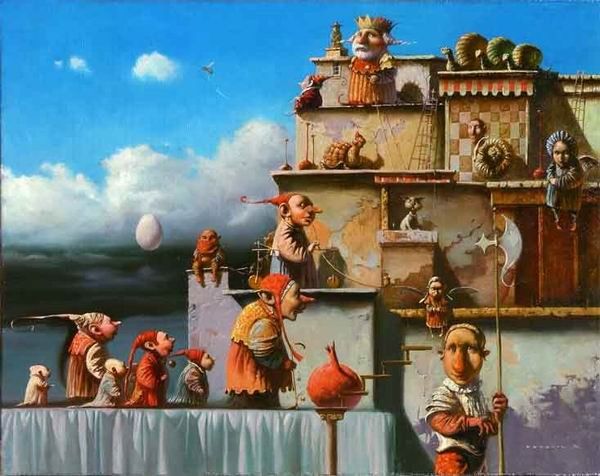
Chess Center of Gravity, Part 1
WHAT MAKES MASTERS SUPERIOR?
There is CoG in physics that we learned about back in school. It deals with how masses and forces are distributed in space. The CoG is the point where the resultant of all individual forces is acting.
But what CoG has to do with chess, I hear you asking?
In chess we also deal with "masses" exercising power in the small space chessboard defines. By analogy with physics, we may assume that in the 8×8 universe must also act some resultant force deriving from how chess pieces influence surrounding Space and interact with each other.
The ability to identify a CoG and then make use of it effectively as l'idée directrice is the biggest single differentiator between chess Masters and the rest of us. It’s not their calculation skills, nor is it their opening preparation (of course, they are far better there, too). What actually makes them superior is their focused effort against the opponent’s CoG. At the same time, they keep protecting their own CoG.
If you ask a Master about CoG, they would turn a blank face. And yet, they use it all the time as one from the mental tool box of big, subconsciously deeply-ingrained ideas that give them orientation and show the way at the board.
What is Chess CoG anyway?

art © Betty Ollier-Lopez
.
DECISIVE FEATURE OF POSITION
In plain English, CoG is simply the most important feature of position. It is one single factor that stands out among many elements of the current situation that you are weighing in. It is what matters most. Masters feel it in a snap. And it is where they excel over us. That is why they are Great Generals of the battlefield, able to spot in a moment the strengths and weaknesses, opportunities and threats.
After locating the CoG, they have oriented themselves and they then know what they want to do next. The entire process is intuitive, with almost no thought given to it.
A very good description of CoG can be found in military manuals (which is not surprising as warfare and chess have common grounds and share the same principles).
According to some online military manuals, the Army tend to “look for a single opponent’s Center of Gravity, normally in the principal capability that stands in the way of the accomplishment of its own mission. Conversely, the army considers a “friendly” CoG as that element — a characteristic, capability, or locality — that enables one’s own forces to accomplish their objectives.”
Nimzovich expresses the same idea in My System (in the chapter on overprotection) that every time your chess pieces establish the contact with an important strategic point (a CoG as a locality from the above military definition!) it will have advantageous effects for your position. For pieces “overprotectors” CoG serves as a source of energy, from which they may continually draw fresh strength. It also provides the greatest imaginable security against possible enemy attack.
The CoG is always seen as the source of power. It provides strength to your position and freedom of action for your men. Keep in mind that CoG should always, always inextricably link to setting objectives and priorities. They always go hand in hand.
Can you think of some CoG examples in chess? Possession of an important file or diagonal, pawn majority, strong squares, control of the center, etc. As you can see, they are all familiar positional themes, but the trick is, how to isolate the most critical one in the current position! Once you have mastered the skill, you are, literally, a Master!
ALWAYS LOOKING FOR CoG
Now you understand that improving your ability to identify and apply CoG is one of best things you can do for your chess. Tactical exercises is good, working on your endgame technique is also good. But CoG is the King!
It’s not a fast learning curve though. Still, CoG must not be dropped beneath your radar’s screen. Include “Where is the CoG?” or “What matters most in this position” when you play yours, or study GM games. Early on, your CoG image will be distorted. But these questions and their (in the beginning evasive) answers will over time be improving your perception of what the most important issue at the board is, your radar screen image getting clearer and sharper.
Next time we will look at this position from GM play for you to better grasp the CoG concept (Larsen-Matanovic, Zagreb, 1965). In the posts that follow we will also cover what consequences may arise when you neglect CoG, or forget about it altogether. Some useful advice on how you can best invest your chess study time and how you can increase your CoG awareness will be offered too.

Before we look at this position together in the post that follows, try to answer the question, What may be that most critical resource available to White’s army commander in this position? The CoG to cash in on?
See you next time!
